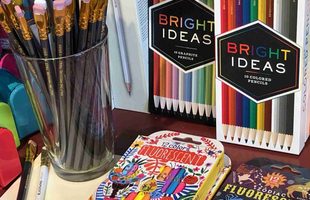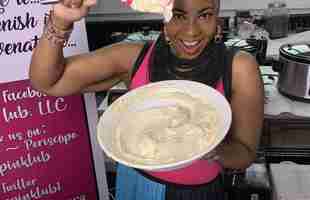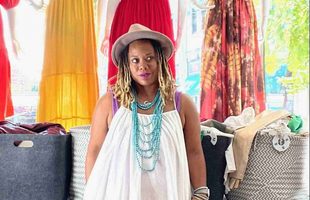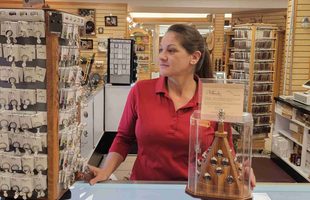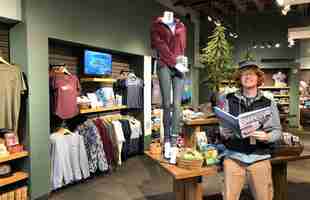By Karen Appold
Every museum gift shop has a merchandise category that attracts the most patrons for one reason or another. For Carissa Pfeiffer, buyer at the Asheville Museum of Science in Asheville, N.C., geology products are number one. In fact, they accounted for 26 percent of the store’s profit in 2018 and included items such as rock, gem, mineral and fossil specimens. “This category mirrors our museum’s exhibitions and collections, so perhaps budding rock enthusiasts among our visitors are inspired to start their own collections,” she said.
Within the geology category, Pfeiffer said the top seller is Break Your Own Geodes from Village Originals, in which kids use a hammer to crack the geodes open. They cost $5 each, so even children on a field trip with limited spending money can afford to purchase one. Velvet bags that customers can fill with their choice of polished rocks, gem bottles and opalite glass with fluorite, which is also known as “magic eggs,” are also popular.
Jenny Nustad, visitor services coordinator, Children’s Museum of La Crosse, La Crosse, Wis., said Animalands’ stuff able animals are the gift shop’s best-selling category. “We don’t sell any other plush to compete with them,” she said. Children get to choose which type of animal skin they want from about 20 different choices and then get to watch it get filled with stuffing and come to life. They can also choose outfits to dress them in and receive a birth certificate where they can officially name their animal. “Kids like that they can make all of the decisions in the process,” she said. Dinosaurs, cats and dogs are favorites.
For Ellen Bragalone, director of retail operations, Museum of Fine Arts, Boston, the 7,500-square foot gift shop’s most profitable category is prints and paper. This includes prints in all formats as well as stationery items such as postcards, single notecards and boxed notecards. “This is a popular category with customers because we are an art museum and our collection is represented best in our print and paper products,” she said. “A reproduction of an image makes for a great memento of a visit.”
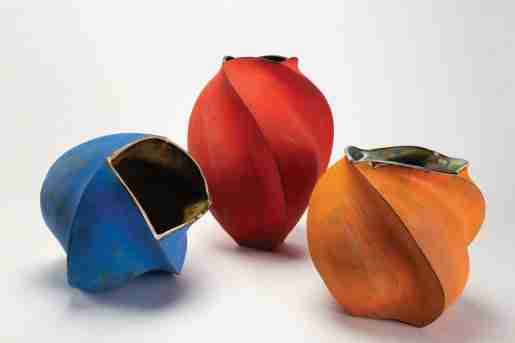 Blue, red and orange vessels from Peter Cunicelli are available at the Princeton University Art Museum.
Blue, red and orange vessels from Peter Cunicelli are available at the Princeton University Art Museum.Prints come in all sizes and are available as a poster, a matted print that can be framed or a framed print that’s ready to hang. Postcards are also a high volume unit category. They allow customers to buy a favorite image at a reasonable price.
At the Kimbell Art Museum in Fort Worth, Texas, Amber Wyatt, shop manager and buyer, said small gifts and accessories are the top-selling categories at its two gift shops. “Customers want a small pick-up item or souvenir from the museum,” she said. Within these categories, the best-sellers are scarves inspired by paintings, magnets, buttons and earrings.
The best-selling earrings are by Zenzii and are made of resin. They are baroque-style or scroll-style earrings that come in a variety of colors and sizes. Patrons are drawn to them because they are lightweight and the $12 to $14 price point is appealing, Wyatt said.
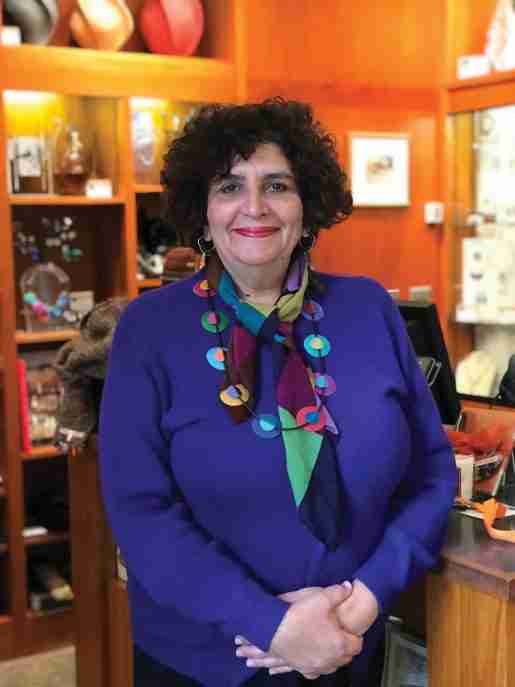 Princeton University Art Museum Store Associate Mona Watnik. Visitors are looking for a quality gift, according to the manager of wholesale and retail operations.
Princeton University Art Museum Store Associate Mona Watnik. Visitors are looking for a quality gift, according to the manager of wholesale and retail operations.Allison Wolf, manager of wholesale and retail operations, Princeton University Art Museum, in Princeton, N.J., said gifts and housewares are the top-selling categories at her 496-square-foot shop. Best-sellers within these categories include small leather goods such as leather card cases, small purses and passport holders (in orange, one of the university’s colors), scarves in a variety of price points and styles, pencils, pens and candles that are either holiday scented or artisan made in beautiful shapes. “Visitors are looking for a quality Princeton University/art museum gift, that is well priced, easy to carry and makes a great gift,” she said.
Exhibit-focused merchandise is the highest revenue maker for Susan Ponciroli, manager of retail operations/buyer/product development, Missouri History Museum, St. Louis, Mo. “The carefully curated selection connects our culturally minded shoppers with their museum visit,” she said. “Once a guest has walked through our galleries, they continue their experience in the museum shop and are delighted by the same images and information.”
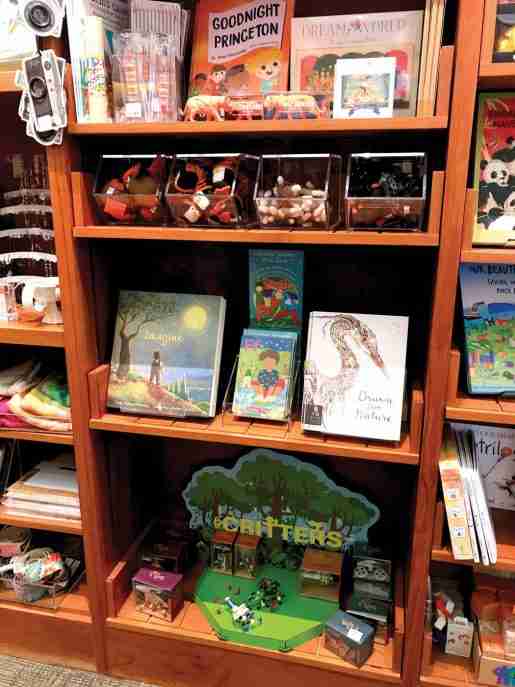 Children’s books and toys available at the Princeton University Art Museum. The manager is always moving the merchandise around to create interest in the store.
Children’s books and toys available at the Princeton University Art Museum. The manager is always moving the merchandise around to create interest in the store.Books, apparel and souvenirs are among customers’ favorite items. “Exhibit apparel and souvenirs often feature an image or inspirational quote that our guest has an affinity to,” Ponciroli said. “These treasures are a lifelong link to a day spent at our museum and they carry our brand out into the world.”
Display Techniques
At Asheville Museum of Science’s 700-square-foot shop, Break Your Own Geodes and polished rocks for bag filling are displayed both on wooden racks and in bins near the floor. “Keeping them displayed at a lower level puts these items at a good height for kids—the museum’s most frequent visitors,” Pfeiffer said.
Animalands’ stuffable animals are displayed right in the front of the 500-square-foot gift shop. “They are the first thing customers see when entering the store,” Nustad says. The animal skins hang from hangers by the big fluff machine which resembles a big cotton candy machine, but with animal stuffing. Outfits are displayed right next to the animal skins and a sign states that if someone purchases an Animaland today, they’ll get a discount on the attire.
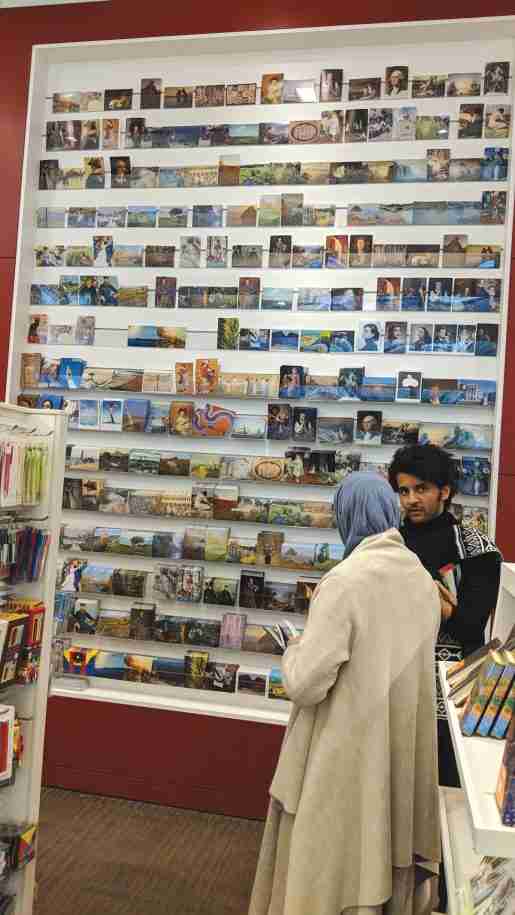 A postcard wall at the Museum of Fine Arts in Boston. Postcards allow customers to buy a favorite image at a reasonable price.
A postcard wall at the Museum of Fine Arts in Boston. Postcards allow customers to buy a favorite image at a reasonable price.At Boston’s Museum of Fine Arts, prints are displayed in matted and framed formats and posters hang on walls to show as many choices as possible. Staff change the images to reflect exhibitions on view.
Small gifts and accessories are displayed on stands, shelves or near a register as an impulse buy, said Kelly Burbach, who also works as a shop manager and buyer at the Kimbell Art Museum. An employee ties scarves beautifully, which mature customers are drawn to as the perfect gift or something for themselves. Students who want a keepsake for their backpack often opt for a button or magnet.
Wolf moves merchandise constantly, so it has a better chance of being viewed. Best-sellers are almost always placed at eye level and close to the cash wrap. “We ensure that visitors can easily see and touch products, and keep them well stocked for people who want 10 or 20 of the same item,” she said.
Exhibit merchandise is displayed at the 3,000-square-foot store’s entrance, Ponciroli says. “We keep our message direct and simple by signing the display with a 22-by-45-inch poster that highlights the exhibit and its run dates,” she said.
Promoting Sales of Top Sellers
Asheville Museum of Science’s social media sites regularly feature mineral and fossil specimens that are found in the museum store as well as in the museum’s collections. “Our street-facing window display also features items from this category occasionally,” Pfeiffer said.
A large selection of prints are available through the Museum of Fine Arts’ online shop. “We offer as many images related to exhibitions as possible,” Bragalone said.
Kimbell Art Museum has two sales annually for its members, who receive 20 percent off instead of their typical 10 percent off non-discounted items. They are usually alerted to the sale via e-mail. “We rarely deep discount items more than 20 percent and if we do, it is usually only once a year and during one of our annual sales which usually take place in summer and fall for two weeks,” Wyatt said.
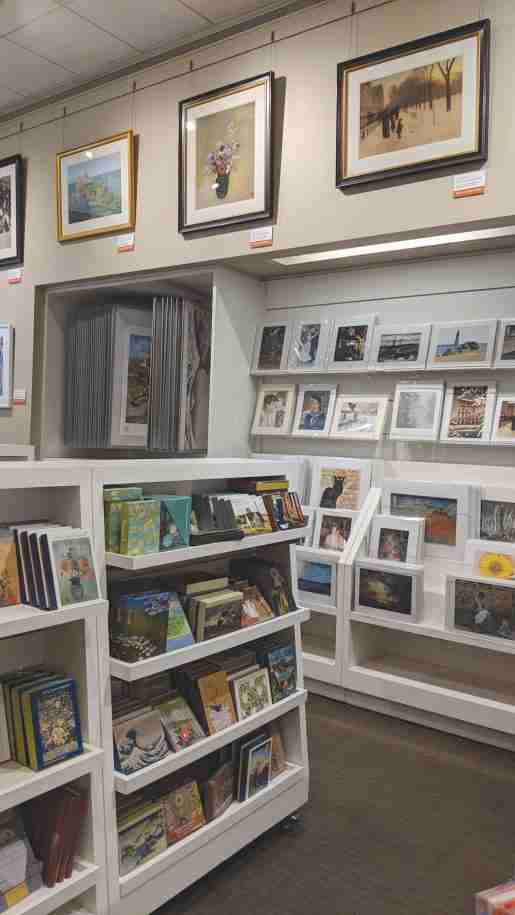 For the 7,500-square-foot gift shop at the Museum of Fine Arts, Boston, Mass., the most profitable category is prints and paper.
For the 7,500-square-foot gift shop at the Museum of Fine Arts, Boston, Mass., the most profitable category is prints and paper.Ponciroli’s sales team directs visitors’ attention to offerings by engaging them in conversations about their visit. “Most of the time they have just entered our shop after viewing an exhibit and are eager to share their stories,” she said. “This is the perfect time for an associate to take them on a store tour and point out items of interest.”
